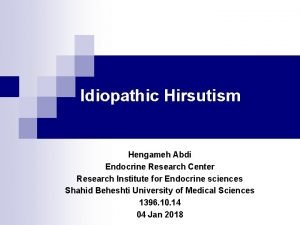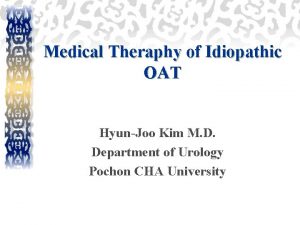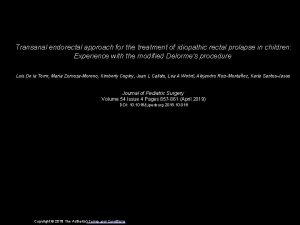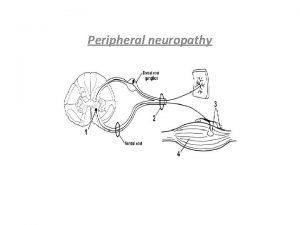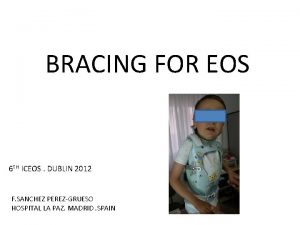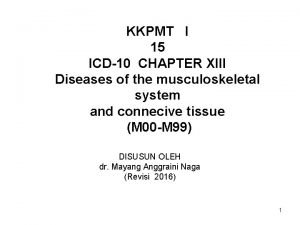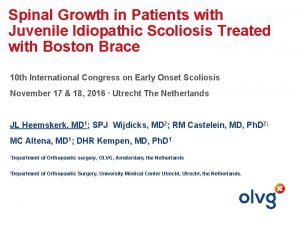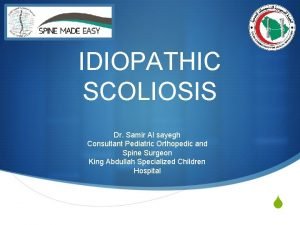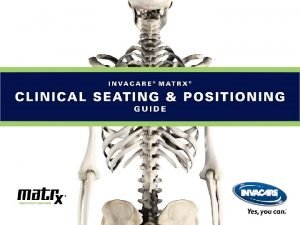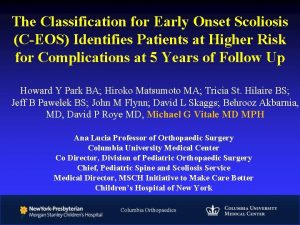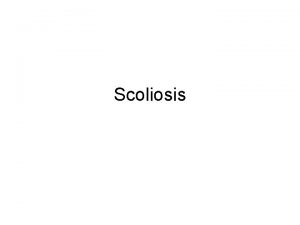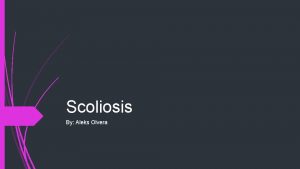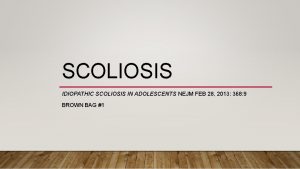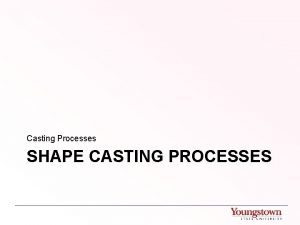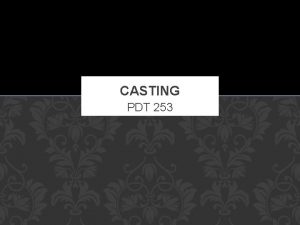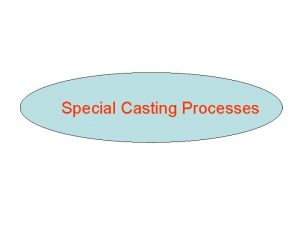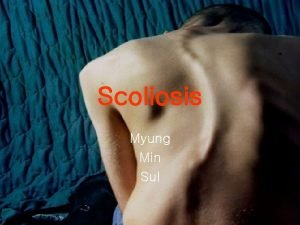Effectiveness of Casting in Non Idiopathic Scoliosis DongPhuong










- Slides: 10

Effectiveness of Casting in Non. Idiopathic Scoliosis Dong-Phuong Tran MS Charles E Johnston MD

Background • Casting is an effective method used to delay or definitively treat infantile idiopathic scoliosis • Effectiveness of casting in non-idiopathic is unknown • Objective: to analyze the outcomes of casting series in non-idiopathic scoliosis

Design & Methods • Consecutive prospective series of non-idiopathic EOS patients treated casted at a single institution • Radiographic outcomes measured before and after cast series completion • Divided cohort into two groups based on treatment after completing cast series: • Nonoperative – brace/observe • Operative

Diagnoses and Categories Stiff syndromic Hyperlax syndromic Other neuromuscular Diagnoses N Arthrogryposis, Marfan, Beals, Stickler, Ehler-Danlos 13 O. I. , Soto syndrome, Ullrich M. D. , trisomy 7 and 9 syndrome 5 Including static encephalopathy 6 Congenital / NF scoliosis 7 Total 31

Radiographic Results: All Patients N=31 First cast age: 4 (1 -9. 2) Number of casts: 4. 1 (2 -9) Months in cast: 11 (2. 4 -22. 1) Major curve changes Pre treatment 64. 8 (40 -95) After last cast Most recent f/u 59. 4 (11 -93) 48. 4 (16 -104) Thoracic height T 1 -T 12 changes Pre treatment 144 (87. 2 -189. 2) After last cast Most recent f/u 155 (116 -218. 9) 188. 5 (110. 8 -279) Average curve improvement: 16. 4° Incl. postop Average thoracic ht gain: 47. 2 mm

Case study 5° 52° Pre treatment, 15 months Ehlers-Danlos syndrome 5 casts for 12. 2 months 15° 33° 1 st in-cast, standing 2 years after last cast removed. 2+11 yo Observation only Most recent f/u 4 years old Observation only

Radiographic results: Nonoperative • • N=11 First cast age: 3. 3 (1 -6. 4) Number of casts: 4. 5 (2 -9) Months in cast: 9. 8 (4. 7 -17) Major curve changes Pre treatment 61. 5 (45 -85) After last cast 43. 9 (11 -67) Most recent f/u 51. 8 (16 -80) Post cast series treatment types: Brace: N=8 Observe: N=3 Avg major curve improvement: 9. 7° Thoracic height T 1 -T 12 changes Pre treatment After last cast Most recent f/u 141. 3 (109 -189. 2) 159. 1 (130. 5 -203) 175. 2 (151. 7 -204. 8) Avg thoracic ht gain: 33. 9 mm

Radiographic Results: Operative N=20 First cast age: 4. 3 Number of casts: 3. 9 Months in cast: 11. 6 Post cast series treatment types: • Conventional GR/MCGR: N=10 • Spinal fusion: N=7 Major curve changes Pre treatment 66. 7 (40 -95) After last cast Most recent f/u 68. 3 (36 -93) 46. 6 (18 -104) Average curve improvement, 20. 1° • VEPTR: N=1 • Halo w/ surgical treatment plans: N=1 postop • Anterior tether: N=1 Thoracic height T 1 -T 12 changes Pre treatment After last cast Most recent f/u 145. 5 (87. 2 -188. 7) 152. 6 (116 -218. 9) Average thoracic ht gained, 49. 3 mm 194. 8 (110. 8 -279) postop

Nonoperative vs. Operative • Nonoperatives • casted at a younger age, 3. 3 vs. 4. 3 years old • had more casts, 4. 5 vs. 3. 9 • casted shorter time, 9. 8 vs. 11. 6 months • smaller pre treatment major curve, 61. 5° vs. 66. 7° • No statistical difference in diagnoses between groups.

Conclusion • Casting in non-idiopathic scoliosis may achieve significant delay if patient treated at a younger age and obtains ~30% deformity correction. • Older patients (> 4) w/o obvious correction in cast can be expected to require surgical rx casting useful only as a delaying tactic.

